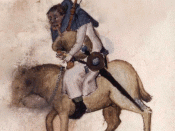The fabliau was a popular genre during Chaucer's time that involved cuckholding and trickery. It was generally understood by the audience to contain elements of bawdiness, comedy, and adultery; however, most fabliaux functioned to uphold conventional Christian values regarding marriage, class, and sexuality. Chaucer's use of fabliaux function to challenge the unfairness of the system.
In Chaucerian fabliaux, sex is used as a weapon""for revenge, for profit, and for deception. For instance, in The Merchant's Tale Pluto and Proserpina intrude upon the sexual intrigues taking place in the garden among January, May and John. Proserpina and Pluto discuss the virtues of men and women in marriage, coming to the conclusion that few men are commendable, but absolutely no women are worthy. Their intervention seems to give divine sanction to the condemnation of women as January's sight is restored so that he can condemn his wife (although he can literally not believe his eyes).
The major aspect of the tale that departs from the traditional fabliau is the class in which these characters fit. However ridiculous the character acts, January is not a lower-class barbarian equal to John the carpenter in the Miller's Tale. However, by today's standards he is a rapist and not condemned in the story for his treatment of May.
The condemnation of May also departs from the other traditional fabliaux. Like Alison of the Miller's Tale, she is crafty, but May is also wicked. She is an actor and manages to elude punishment from her husband, but unlike the Miller's Tale this is not a satisfactory conclusion. The Miller's Tale prized cunning and crafty behavior, the Merchant's Tale adheres to more traditional values.
The Merchant's Tale also stretches the conventions of the fabliau through the climax of the tale in which Pluto and Proserpina intrude upon the...


